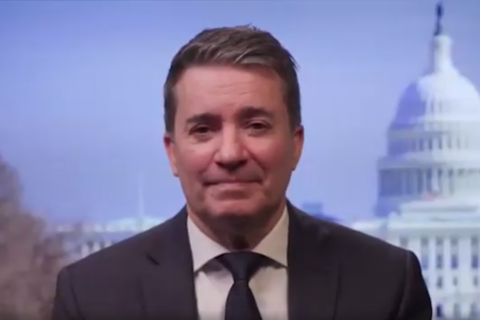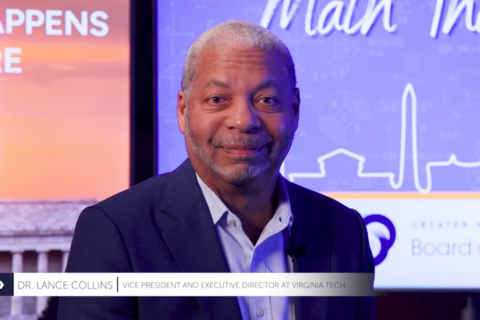This content is sponsored by CareFirst BlueCross BlueShield.
CareFirst BlueCross BlueShield (CareFirst), the largest not-for-profit health plan in the mid-Atlantic region, is delivering millions of dollars to community-based organizations in an effort to add money and resources to the fight against a behavioral health crisis that was worsened by the COVID-19 pandemic.
The company awarded nearly $8 million in grants to 19 community-based organizations in Maryland, Washington, D.C. and Northern Virginia.
“I’m really thrilled to work for an organization that responded to the call in this meaningful and substantive way,” said Destiny-Simone Ramjohn, Ph.D., CareFirst’s vice president of community health and social impact.
The multi-year grants will work to address the damaging impact of the pandemic on the mental health of the region’s children, adolescents and families.
It will help to eliminate barriers in access to services while expanding the number of providers available in the behavioral health workforce.
“The range of behavioral health conditions out there includes everything from sadness and hopelessness to substance abuse disorder, anxiety and depression,” Ramjohn said.
A growing problem
Ramjohn cited a disturbing article in the magazine “Scientific American” that highlighted suicides among Black people aged five to 17 between 2003 and 2017.
Researchers found that suicides rose among Black youth during that time period, and that the biggest increases occurred among teens aged 15 to 17.
The annual increase among girls was “more than twice what it was for boys.”
“That brought me to a grinding halt,” Ramjohn said. “There were certainly behavioral health conditions prior to the pandemic, but those conditions were then exacerbated by COVID and it made an already fragile situation even worse.”
U.S. Surgeon General Vivek Murthy has used the word “devastating” when describing the trend.
“I’m deeply concerned as a parent and as a doctor that the obstacles this generation of young people face are unprecedented and uniquely hard to navigate and the impact that’s having on their mental health is devastating,” Murthy said.
According to the Centers for Disease Control and Prevention, emergency department visits for suicide attempts among girls aged 12 to 17 were up more than 50% in early 2021 compared to the same period prior to the pandemic in 2019.
Priorities for funding
CareFirst identified a number of funding priority areas during the process of choosing which community-based organizations would receive grant money.
For example, the company looked for groups that work to address behavioral health disparities among at-risk youth, including rural, low-income, youth of color and LGBTQ youth.
“LGBTQ youth in particular are experiencing barriers to accessing culturally-competent care,” Ramjohn explained.
CareFirst prioritized programs that address the root causes leading to higher prevalence of mental health and substance use disorders as well as services that improve screening and referral pathways for behavioral health programs.
Read more: CareFirst BlueCross BlueShield strives for better health outcomes through public health – WTOP News
“The first goal is to just expand the number of services that are available to be provided to young people,” Ramjohn said. “The second is certainly expanding the behavioral health workforce, recognizing that young people need to be able to access those services in a timely fashion.”
Where’s the money going?
Among the organizations receiving grant money is the Enoch Pratt Library of Baltimore City in partnership with the Maryland Peer Advisory Council and Healing City Baltimore, which together offer a support program in which peer recovery specialists serve as role models and provide a safe, non-judgmental space that promotes overall wellness.
“Services are available, but it can be unwieldy to try to navigate that level of complexity,” Ramjohn explained. “So how do we create more wayfinding opportunities so that services that are available are accessible and affordable to those who are who need it most.”
Specialists who work in the library’s program are individuals with lived experience of substance misuse, mental health or behavioral health challenges.
“What we’re hoping is that by extending the continuum of where services are provided, we can extend the number of people who can recognize the signs and symptoms, wrap their arms around young people and their families and work toward healing,” Ramjohn said.
Another grant recipient is Sasha Bruce Youthwork in Washington, D.C., which works to implement services for homeless youth.
“They have worked to provide behavioral healthcare for decades,” Ramjohn said. “Certainly we want young people who are currently homeless to convert into a stable housing situation and ameliorate all of the psychological impacts of that, so we’re really proud of that partnership.”
Ramjohn added that private businesses and other employers can do their part by examining productivity levels and making sure their employees have a healthy work-life balance.
“We all have a role to play in creating healthier communities,” Ramjohn said.







